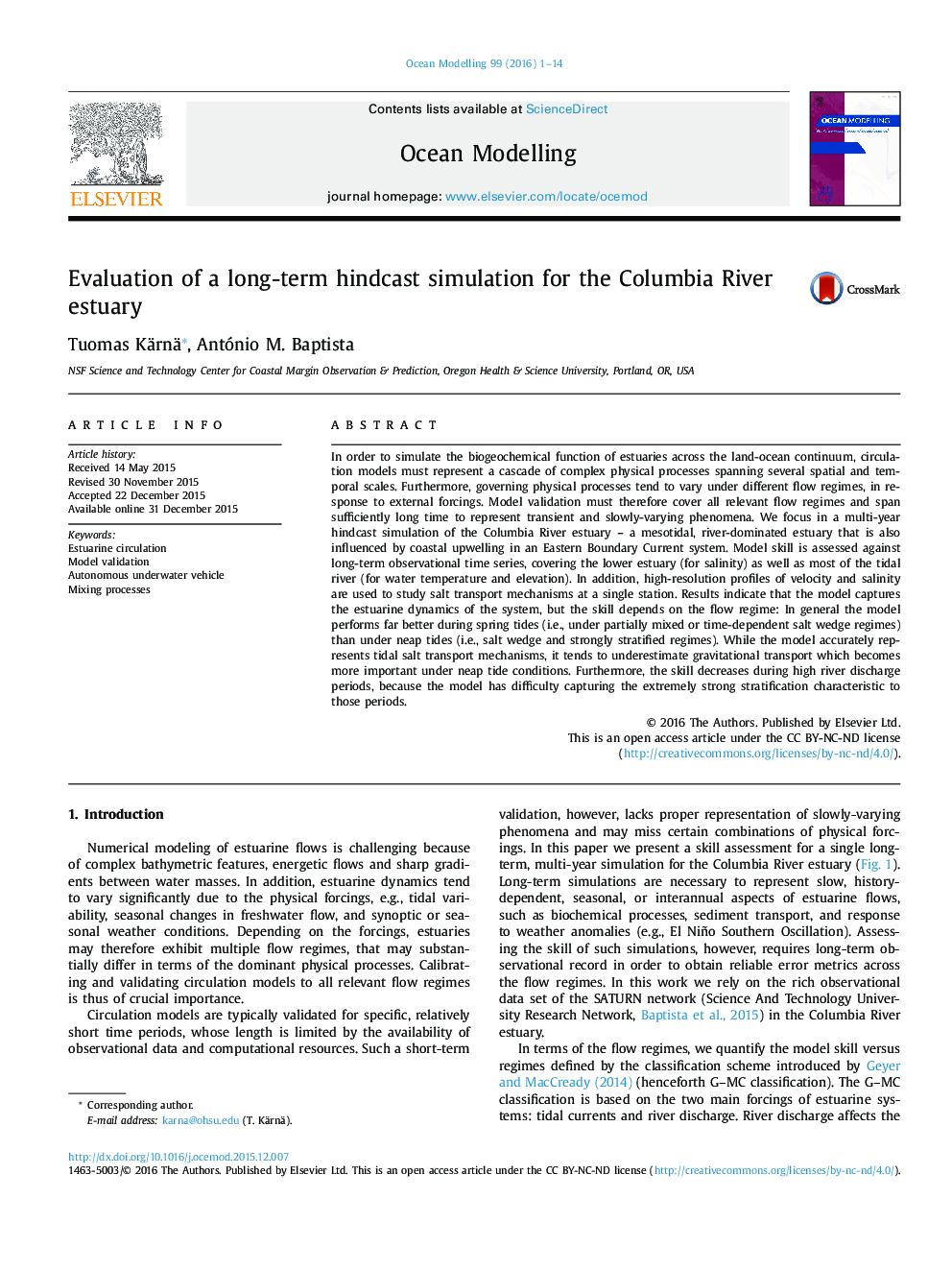| کد مقاله | کد نشریه | سال انتشار | مقاله انگلیسی | نسخه تمام متن |
|---|---|---|---|---|
| 6388065 | 1627750 | 2016 | 14 صفحه PDF | دانلود رایگان |
- Skill of a long-term Columbia River estuary simulation was assessed.
- Estuary classification scheme was used to identify four characteristic flow regimes.
- Model skill was found to greatly depend on the flow regime.
- High-resolution measurements were used to compare salt transport mechanisms.
- Gravitational salt transport dominates under neap tides, but not during springs.
In order to simulate the biogeochemical function of estuaries across the land-ocean continuum, circulation models must represent a cascade of complex physical processes spanning several spatial and temporal scales. Furthermore, governing physical processes tend to vary under different flow regimes, in response to external forcings. Model validation must therefore cover all relevant flow regimes and span sufficiently long time to represent transient and slowly-varying phenomena. We focus in a multi-year hindcast simulation of the Columbia River estuary - a mesotidal, river-dominated estuary that is also influenced by coastal upwelling in an Eastern Boundary Current system. Model skill is assessed against long-term observational time series, covering the lower estuary (for salinity) as well as most of the tidal river (for water temperature and elevation). In addition, high-resolution profiles of velocity and salinity are used to study salt transport mechanisms at a single station. Results indicate that the model captures the estuarine dynamics of the system, but the skill depends on the flow regime: In general the model performs far better during spring tides (i.e., under partially mixed or time-dependent salt wedge regimes) than under neap tides (i.e., salt wedge and strongly stratified regimes). While the model accurately represents tidal salt transport mechanisms, it tends to underestimate gravitational transport which becomes more important under neap tide conditions. Furthermore, the skill decreases during high river discharge periods, because the model has difficulty capturing the extremely strong stratification characteristic to those periods.
Journal: Ocean Modelling - Volume 99, March 2016, Pages 1-14
